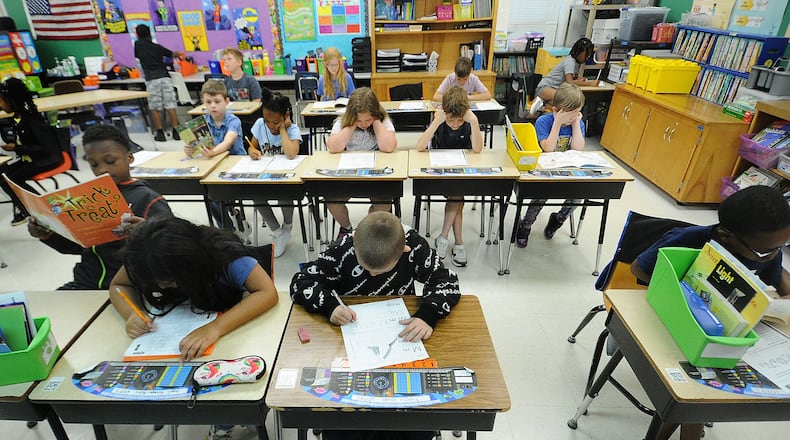The report is meant to be a broad picture of the state of education achievement in Ohio, according to Ohio State professor Vladimir Kogan, who has been creating reports on test scores for the last three years.
Kogan said the increased scores in language arts could be because Ohio has been focused on improving student reading with Ohio Gov. Mike DeWine’s initiative on the science of reading, which backs evidence-based curriculum using research on how the brain learns to read.
DeWine advocated for additional funds to be put into the recently passed budget for this rollout. The result was $86 million for educator professional development, $64 million for curriculum and instructional materials and $18 million for literacy coaches.
“I don’t know if there’s a cause and effect relationship there,” Kogan said. “But again, it could reflect kind of the prioritization at the state level that we’ve put on reading.”
Math scores have remained stubbornly lower than English scores, though math scores have improved since 2020 levels. Elementary kids have smaller gaps compared to pre-pandemic in math than middle school kids.
Kogan said the state should be focusing on what the data shows are shortfalls, like the smaller gains in math scores than reading and data that shows older students are struggling to catch up more than younger students.
“Younger students have caught up more than older students, which I think is concerning because older students have less time left,” before graduation, Kogan said.
He noted there’s also a lot of variation district to district in test score improvements. Some of the suburban schools are almost entirely recovered, while urban districts are still behind.
“One of the most concerning things is that the districts that fell behind the most initially have not caught up faster,” Kogan said. “They’re still the most behind.”
Aaron Churchill, Ohio research director for the Fordham Institute, an education think tank, said students might have fallen behind in math because math builds on itself, so a student who lost instruction in fractions might be struggling in Algebra 1.
He suggested policy makers look at ways to help students, though he acknowledged there is not as much data to point to how to teach kids math in the same way there is to teach kids reading.
But repeating previous learning through tutoring and instruction may help, he suggested.
“I do think there needs to be some focus on math in particular,” Churchill said.
The state has invested $26 million in tutoring for six vendors who can provide services at no cost to schools, and invested in an online math tutoring platform, Zearn, that all Ohio students in grades 6-8 will have access at no cost through June 30, 2025.
About the Author

